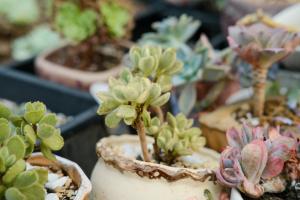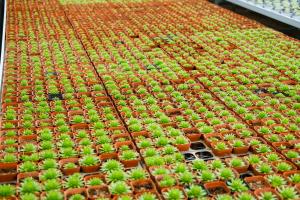How to Easily Fertilize a Cherry Tomato Plant
Love cherry tomatoes but struggle to get them to grow? If your plant isn't producing the way you'd like, it may be time to reassess your fertilizing methods. While cherry tomatoes are relatively easy to care for, they do require a little extra attention, especially when it comes to nutrients. Here are some tips on how to easily fertilize your cherry tomato plant:
Choose the Right Fertilizer
All fertilizers contain three primary nutrients: nitrogen, phosphorus, and potassium. When it comes to a cherry tomato plant, you need to choose a fertilizer with a low nitrogen-to-phosphorus ratio (NPK). Too much nitrogen can result in excessive foliage growth and less fruit. Choose a fertilizer with an NPK ratio of 5-10-10 or 5-12-12 for the best results.
Feed Regularly
Don't wait for your cherry tomato plant to show signs of nutrient deficiencies before fertilizing. Instead, build a regular feeding schedule into your gardening routine. Plan to fertilize every two to three weeks during the growing season, which typically runs from early spring to early fall. In the winter months, cut back to once per month or skip fertilization entirely.
Avoid Over-Fertilizing
While it can be tempting to add more fertilizer than recommended in hopes of even better results, this can actually harm your cherry tomato plant. Over-fertilization can lead to a host of issues, including stunted growth, yellowing leaves, and even root damage. Always follow the instructions on your fertilizer package and err on the side of caution.
Use Organic Options
Organic fertilizers are a great choice for those looking to avoid synthetic chemicals. They release nutrients more slowly and are less likely to burn your plants. Plus, organic options are typically gentler on the environment. Look for options such as compost, worm castings, and fish emulsion to give your cherry tomato plant a nutrient boost.
Apply Close to the Roots
When fertilizing your cherry tomato plant, it's important to apply the fertilizer close to the roots. This will ensure that the nutrients are absorbed efficiently and reduce the risk of runoff. You can do this by working the fertilizer into the top inch of soil or by applying it directly to the base of the plant.
Conclusion
Fertilizing a cherry tomato plant doesn't have to be complicated. By choosing the right fertilizer, feeding regularly, avoiding over-fertilization, using organic options, and applying close to the roots, you can give your plant the nutrients it needs to thrive. With a little extra care, you'll be enjoying your own delicious cherry tomatoes in no time!

 how many times do yo...
how many times do yo... how many planted tre...
how many planted tre... how many pine trees ...
how many pine trees ... how many pecan trees...
how many pecan trees... how many plants comp...
how many plants comp... how many plants can ...
how many plants can ... how many plants and ...
how many plants and ... how many pepper plan...
how many pepper plan...





























